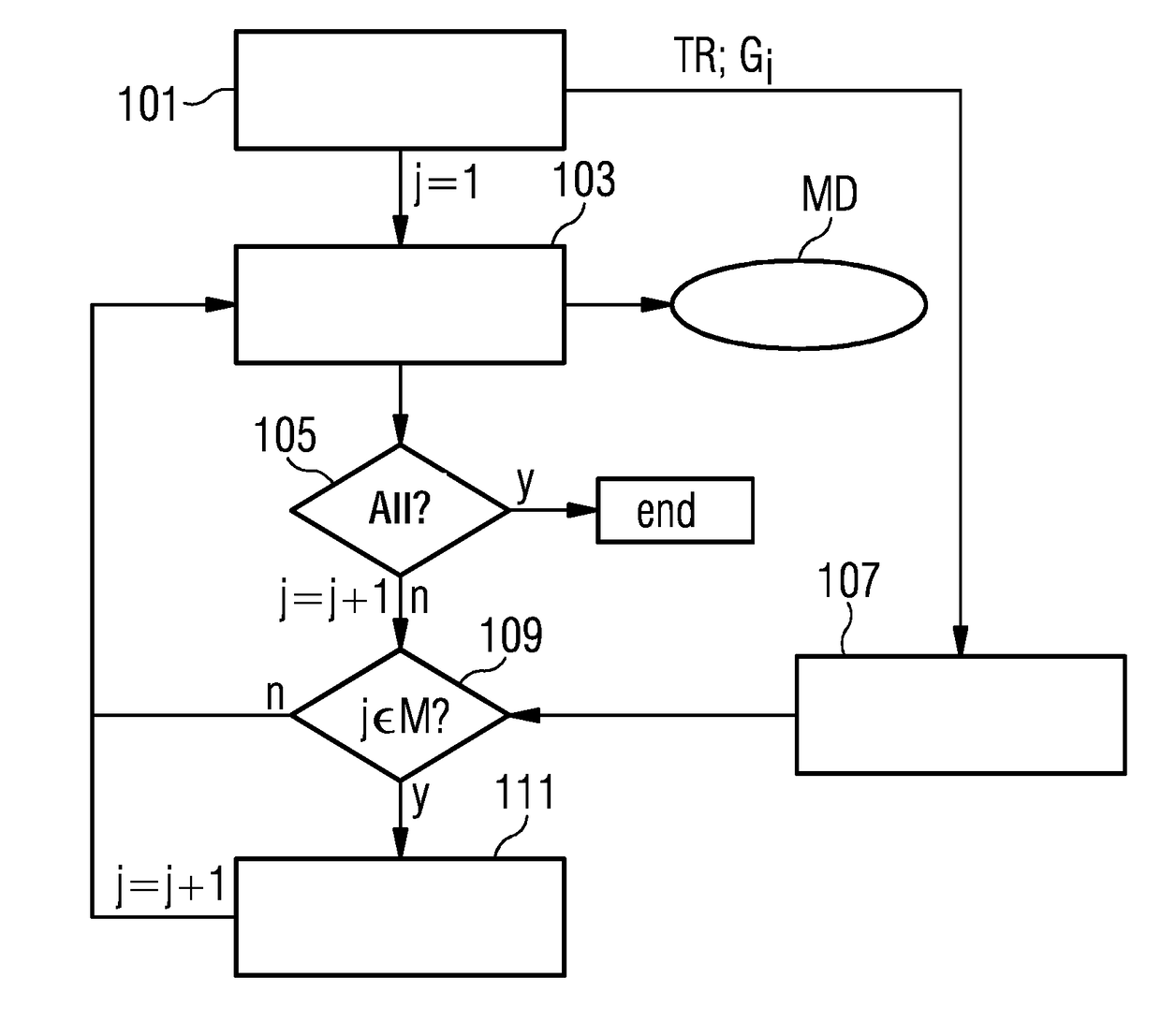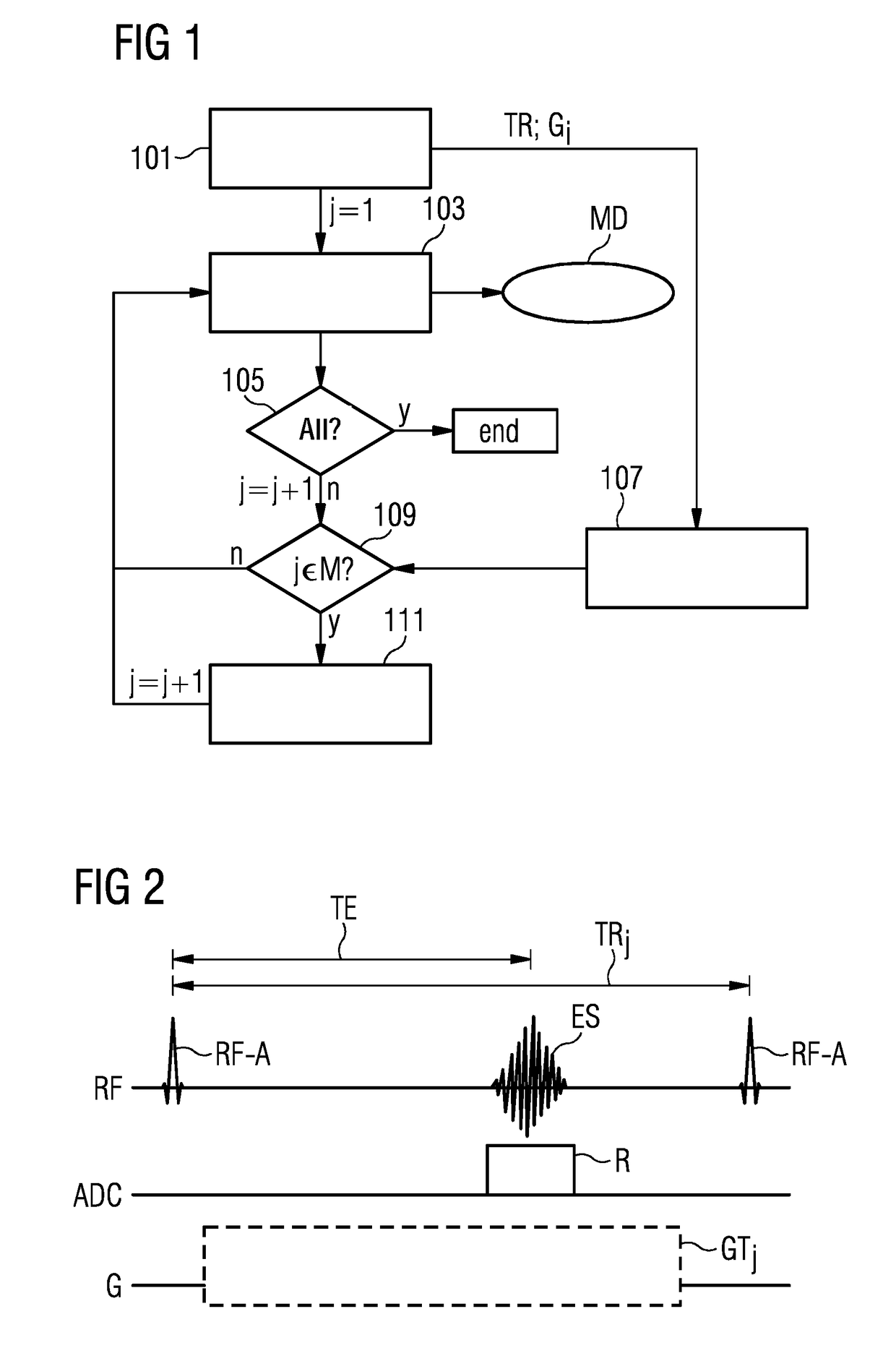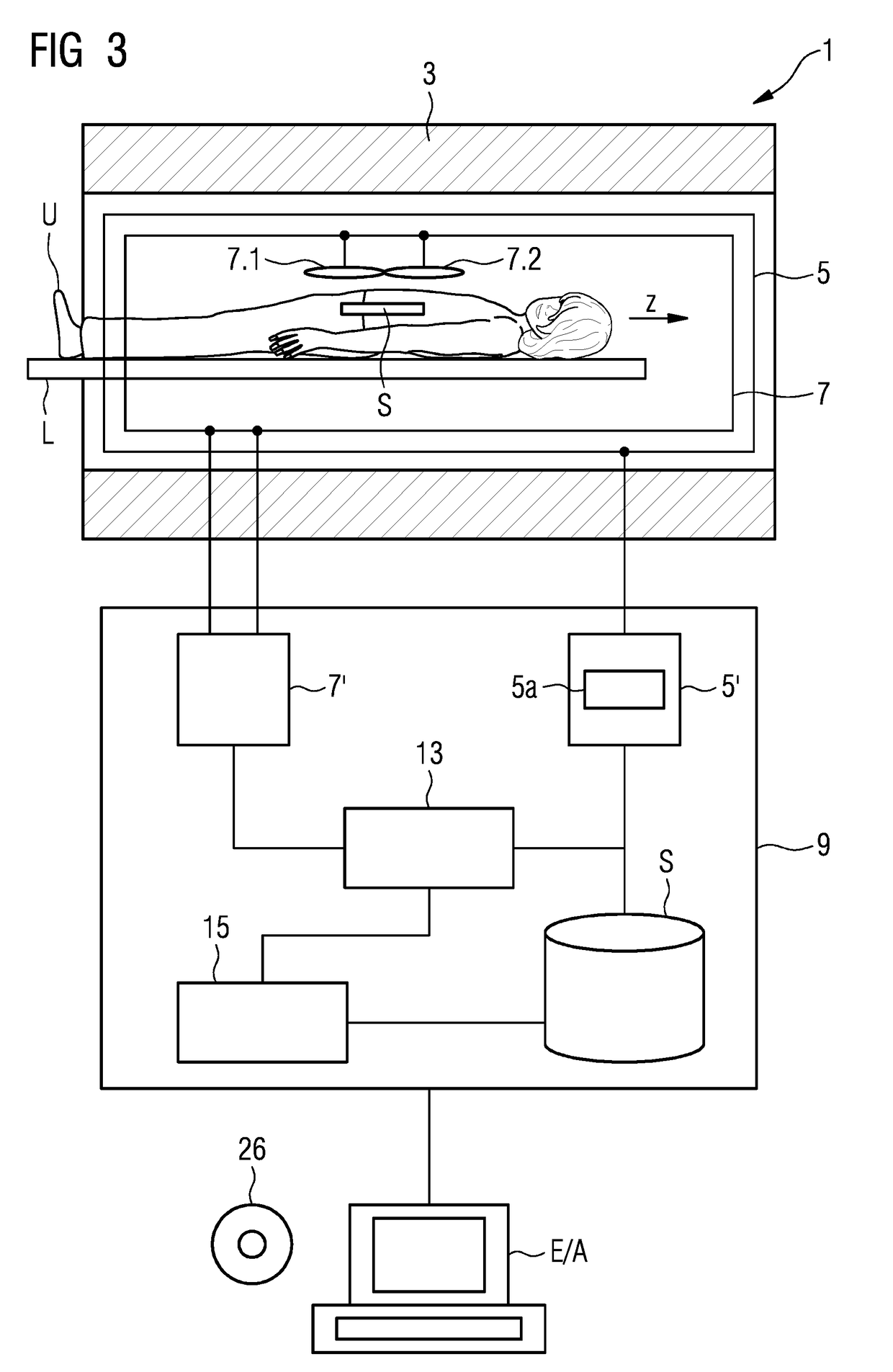Magnetic resonance method and apparatus for reducing the repetition time without increasing the gradient capacity utilization
a technology of gradient control system and repetition time, which is applied in the direction of magnetic measurement, measurement using nmr, instruments, etc., can solve the problems of non-robust design and no boundary conditions imposed by hardware limitations of gradient control system, and achieve the effect of shortening the repetition time tr
- Summary
- Abstract
- Description
- Claims
- Application Information
AI Technical Summary
Benefits of technology
Problems solved by technology
Method used
Image
Examples
Embodiment Construction
[0018]FIG. 1 shows a flowchart of the inventive method for generating scan data of an examination object by magnetic resonance technology.
[0019]Initially, a pulse sequence to be used for a desired scan of an examination object and parameters desired therefor, for example, a desired contrast, a desired field of view (FOV) and / or a desired resolution, are set (block 101).
[0020]According to the selected pulse sequence, initially in a first repetition (j=1), RF pulses are radiated into the examination object and gradients are activated in order to read out and store MR signals generated thereby as scan data MD in k-space along trajectories determined by the pulse sequence (block 103).
[0021]Following the performance of a repetition according to the selected pulse sequence (block 103), in a query 105, it is tested whether all the desired scan data MD have already been read out and stored. If this is the case (“y”, 105), the scan ends (“end”). If not all the desired scan data MD have been ...
PUM
 Login to View More
Login to View More Abstract
Description
Claims
Application Information
 Login to View More
Login to View More - R&D
- Intellectual Property
- Life Sciences
- Materials
- Tech Scout
- Unparalleled Data Quality
- Higher Quality Content
- 60% Fewer Hallucinations
Browse by: Latest US Patents, China's latest patents, Technical Efficacy Thesaurus, Application Domain, Technology Topic, Popular Technical Reports.
© 2025 PatSnap. All rights reserved.Legal|Privacy policy|Modern Slavery Act Transparency Statement|Sitemap|About US| Contact US: help@patsnap.com



